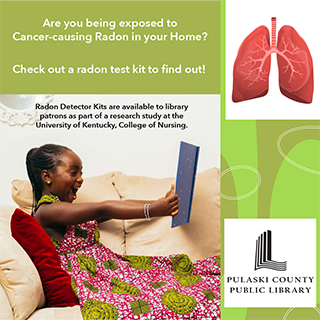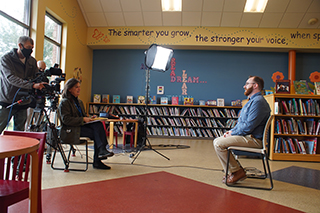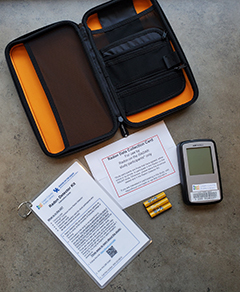Partnerships for Environmental Public Health (PEPH)
Study Location: Kentucky
Academic Partners:
University of Kentucky
Ellen J. Hahn, Ph.D.
Stacy Stanifer, Ph.D.
Anna Hoover, Ph.D.
Mary Kay Rayens, Ph.D.
Kentucky Geological Survey
William Haneberg, Ph.D.
Community Partners:
Pennyrile Area Development District
Logan County Public Library
Southern Area Health Education Center
Northeast Area Health Education Center



Project Description
Radon, a naturally occurring radioactive gas, is detrimental to human health. Radon exposure is the second leading cause of lung cancer. Kentucky leads the nation in the incidence of new lung cancer cases, and researchers suspect that the individual or combined effects of tobacco smoke and radon exposure play a role.
A transdisciplinary study, Residents Acting to Detect and Alleviate Radon (RADAR), addresses community concerns about lung cancer. It identifies geological and atmospheric conditions that increase radon intrusion into homes and translates this knowledge to raise awareness of exposure risk. Partnerships between geologists and community scientists facilitate the comparison of a digital radon detector called Airthings to traditional methods. These partnerships also increase community access to low-cost radon mitigation, thereby reducing the overall risk of radon exposure in homes.
The RADAR study challenges and expands the current environmental health science paradigm by integrating knowledge about localized bedrock geology with radon levels. Researchers use this knowledge to inform digital technologies for home testing and affordable mitigation efforts. The study builds capacity in environmental health by training residents in rigorous data collection and interpretation of findings and engaging them in creating and promoting library loan programs to increase radon testing. Additionally, community scientists learn how to create sustainable environmental health action plans to alleviate radon exposure in rural communities in Kentucky.
Specific project aims are to:
- Use a community science approach to identify and train 60 community residents in four rural Kentucky counties to test for radon using novel low-cost digital technology and evaluate change in environmental health literacy and self-efficacy.
- Compare indoor home and soil radon values over time, controlling for atmospheric conditions, seasonality, geology, topography, and smoking in the home.
- Create and evaluate a pilot radon detector library loan program with 400 homeowners across the four counties.
- Launch a radon detector loan program and examine changes in information seeking behavior, including home testing and accessing geologically based radon potential maps.
- Examine the impact of community scientist-led radon coalitions on reach, effectiveness, adoption, implementation, maintenance, and environmental health literacy.
Related Links
- Watch a short video that researchers created to show community scientists and library patrons how to use the Airthings radon detector.


